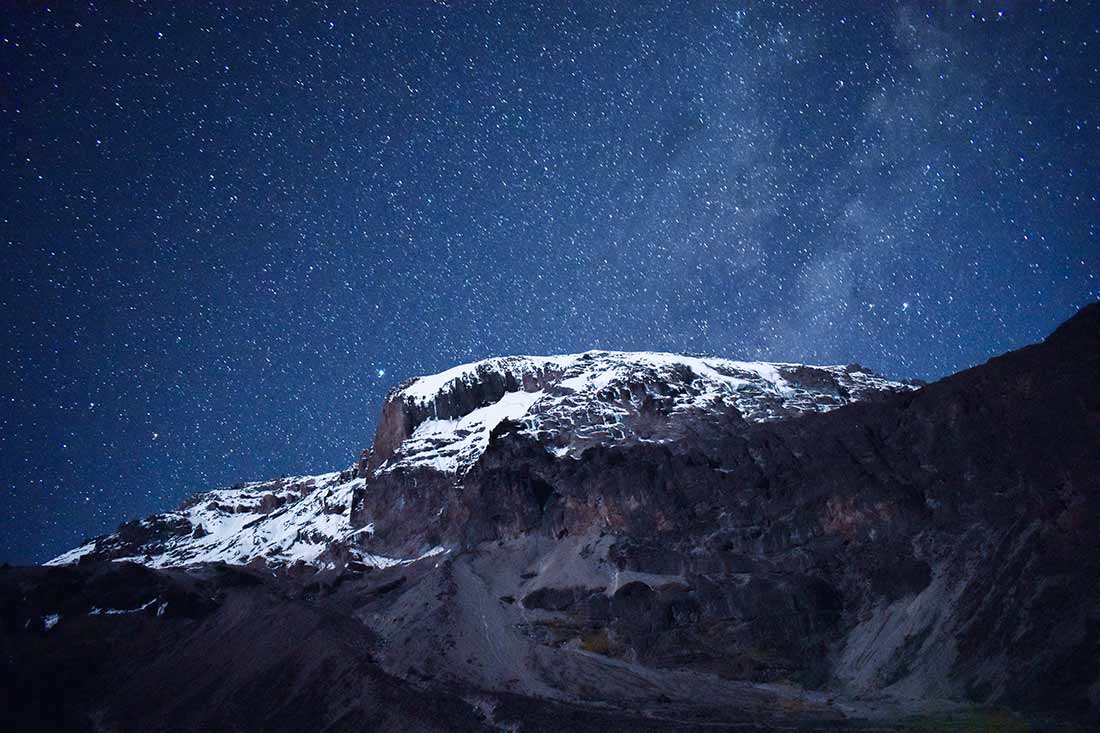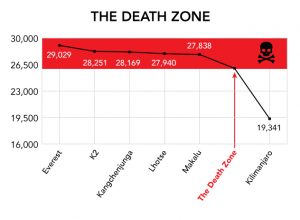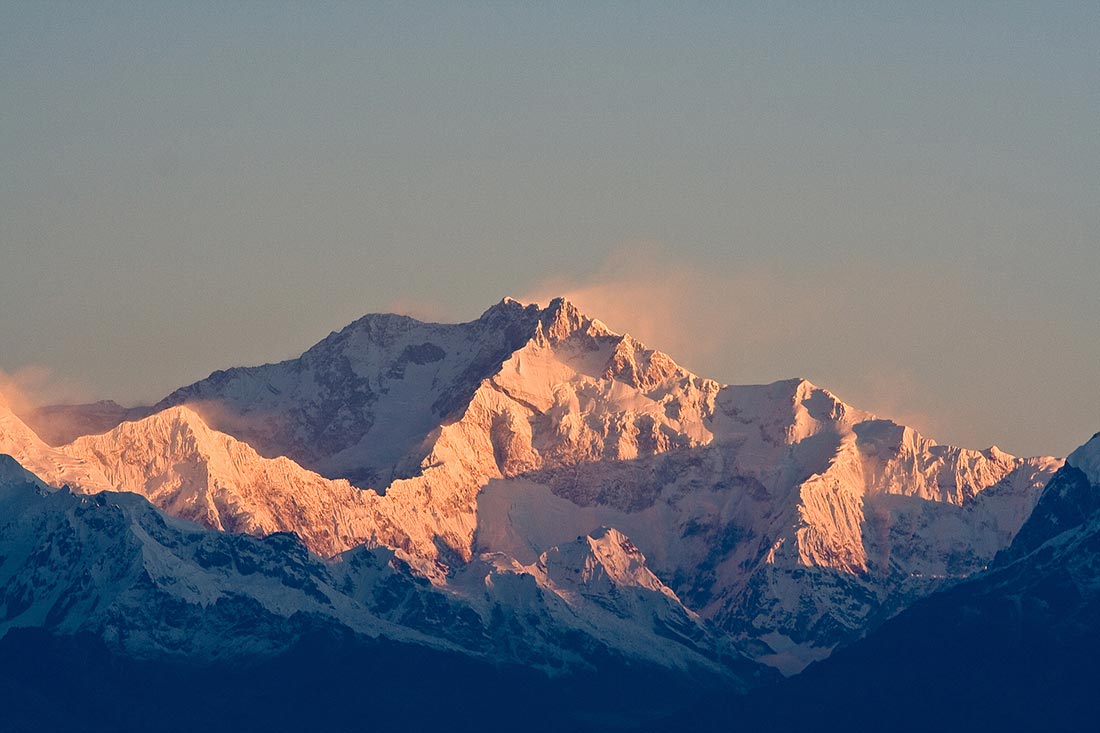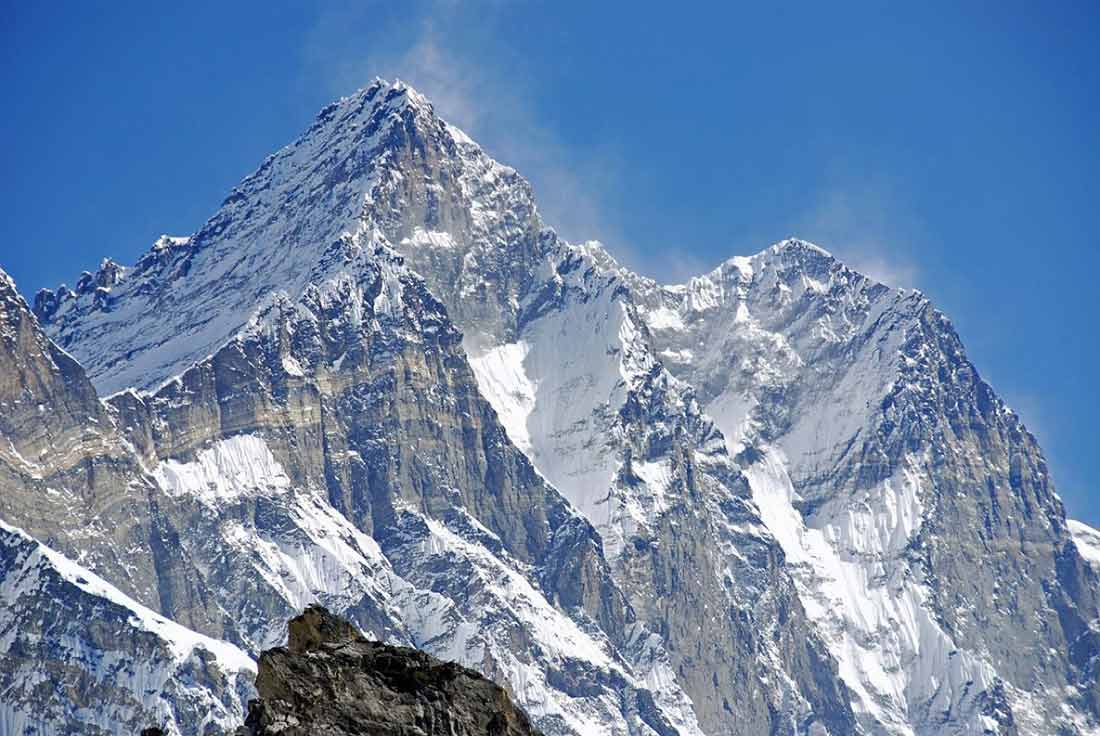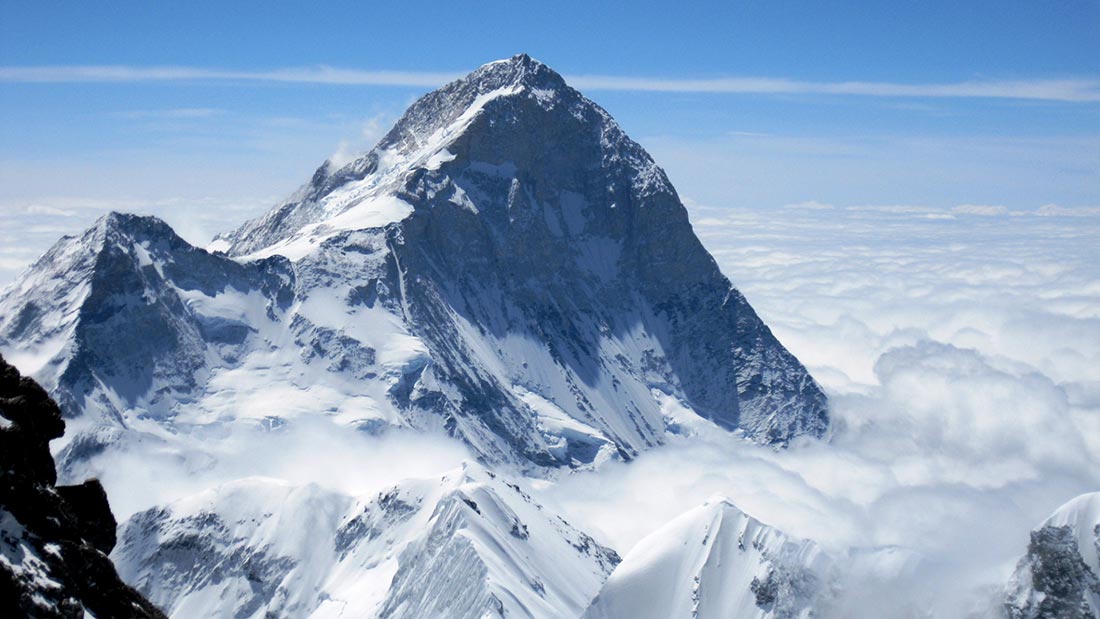When it comes to high-altitude mountain climbing, certain terms evoke a sense of danger and mystique. One such term is the “death zone.” The death zone refers to elevations above 26,247 feet (8,000 meters). At this elevation, the human body’s ability to function properly is severely compromised. This is due to the thinning of oxygen in the atmosphere. While the concept of the death zone is associated with treacherous peaks like Mount Everest, it’s important to clarify that not all high mountains fall within this zone of extreme altitude.
Mount Kilimanjaro, Africa’s highest peak and a sought-after destination for climbers and adventurers, often raises the question: Is Kilimanjaro in the death zone? The short answer is no, but the explanation is worth exploring.
Understanding the Death Zone
The death zone, as mentioned, refers to elevations above 26,247 feet (8,000 meters). At this altitude, the oxygen level in the atmosphere is significantly reduced, making it incredibly challenging for the human body to acclimatize and function optimally. Common altitude-related issues such as hypoxia (oxygen deficiency), altitude sickness, and even cerebral or pulmonary edema can occur in the death zone due to the limited availability of oxygen for bodily functions.
 Five Tallest Mountains in the World
Five Tallest Mountains in the World
- There are 14 peaks in the death zone. These peaks are located in the Himalayas and Karakoram ranges in Asia.
- Swiss doctor Edouard Wyss-Dunant coined the term “death zone” in 1953. He called it the “lethal zone”.
- The term refers to the fact that at these altitudes, the oxygen pressure is not enough to sustain human life for an extended period.
- People are advised not to stay in the death zone for more than 16 to 20 hours.
- Since the first official ascent in 1953, more than 200 climbers have died on Mount Everest. Most of these deaths occurred in the death zone.
Mount Everest
Elevation: 8,848 meters (29,029 feet)
Location: Nepal and China (Himalayas)
Notable for being the highest peak globally, Everest attracts climbers from around the world. It’s situated on the border of Nepal and Tibet (China) and is known for its challenging conditions and extreme altitude.
K2 (Mount Godwin-Austen)
Elevation: 8,611 meters (28,251 feet)
Location: Pakistan and China (Karakoram Range)
Often referred to as the “Savage Mountain,” K2 is renowned for its technical difficulty and unpredictable weather. It’s the second-highest peak and is considered more challenging to climb than Everest due to its steep and demanding routes.
Kangchenjunga
Elevation: 8,586 meters (28,169 feet)
Location: Nepal and India (Himalayas)
The third-highest mountain, Kangchenjunga sits on the border between Nepal and the Indian state of Sikkim. It’s a stunning mountain and possesses challenging climbing conditions.
Lhotse
Elevation: 8,516 meters (27,940 feet)
Location: Nepal and China (Himalayas)
Lhotse is the fourth-highest mountain and shares a close proximity to Everest. It’s often considered a challenging extension of the Everest climb, as the two peaks are connected by the South Col.
Makalu
Elevation: 8,485 meters (27,838 feet)
Location: Nepal and China (Himalayas)
Makalu ranks as the fifth-highest mountain and is noted for its distinct pyramid shape. It’s located southeast of Everest, in the border region between Nepal and Tibet.
These towering peaks present significant challenges to climbers due to their extreme altitudes, unpredictable weather, and technical difficulties. They continue to captivate mountaineers and adventurers from across the globe.
Kilimanjaro’s Altitude
Mount Kilimanjaro stands at an impressive height of 19,341 feet (5,895 meters) above sea level. While it’s a towering peak and the highest in Africa, its summit falls well below the threshold of the death zone. This means climbers ascending Kilimanjaro are not exposed to the same extreme altitude challenges those scaling peaks above 8,000 meters face.
Challenges of Altitude on Kilimanjaro
Although Kilimanjaro’s summit is not in the death zone, climbers must still contend with the effects of high altitude. As one ascends the mountain, the air becomes thinner, and oxygen levels decrease. This can lead to symptoms of altitude sickness, including headaches, nausea, fatigue, and shortness of breath. Therefore, climbers on Kilimanjaro need to acclimatize properly and allow their bodies time to adjust to the changing conditions.
The Importance of Proper Preparation
While Kilimanjaro may not be in the death zone, it’s crucial to emphasize that high-altitude climbing presents real challenges. Climbers must be adequately prepared, both physically and mentally, for the journey. Proper acclimatization, hydration, and careful ascent planning are essential to ensure a safe and successful climb.
Final Thoughts
In mountaineering, the term “death zone” conjures images of extreme altitudes and perilous conditions. However, not all high peaks fall within this altitude range. Is Kilimanjaro in the death zone? Since the summit is 19,341 feet, it does not fall into the death zone. However, climbers tackling Kilimanjaro still face altitude-related challenges. These are not as extreme as the conditions encountered in the true death zone.
As adventurers set their sights on Kilimanjaro, it’s crucial to approach the climb with respect for the mountain’s altitude and its potential effects on the body. By understanding the differences between various altitude levels and their implications, climbers can better prepare for a safe and rewarding experience on this iconic African peak.

